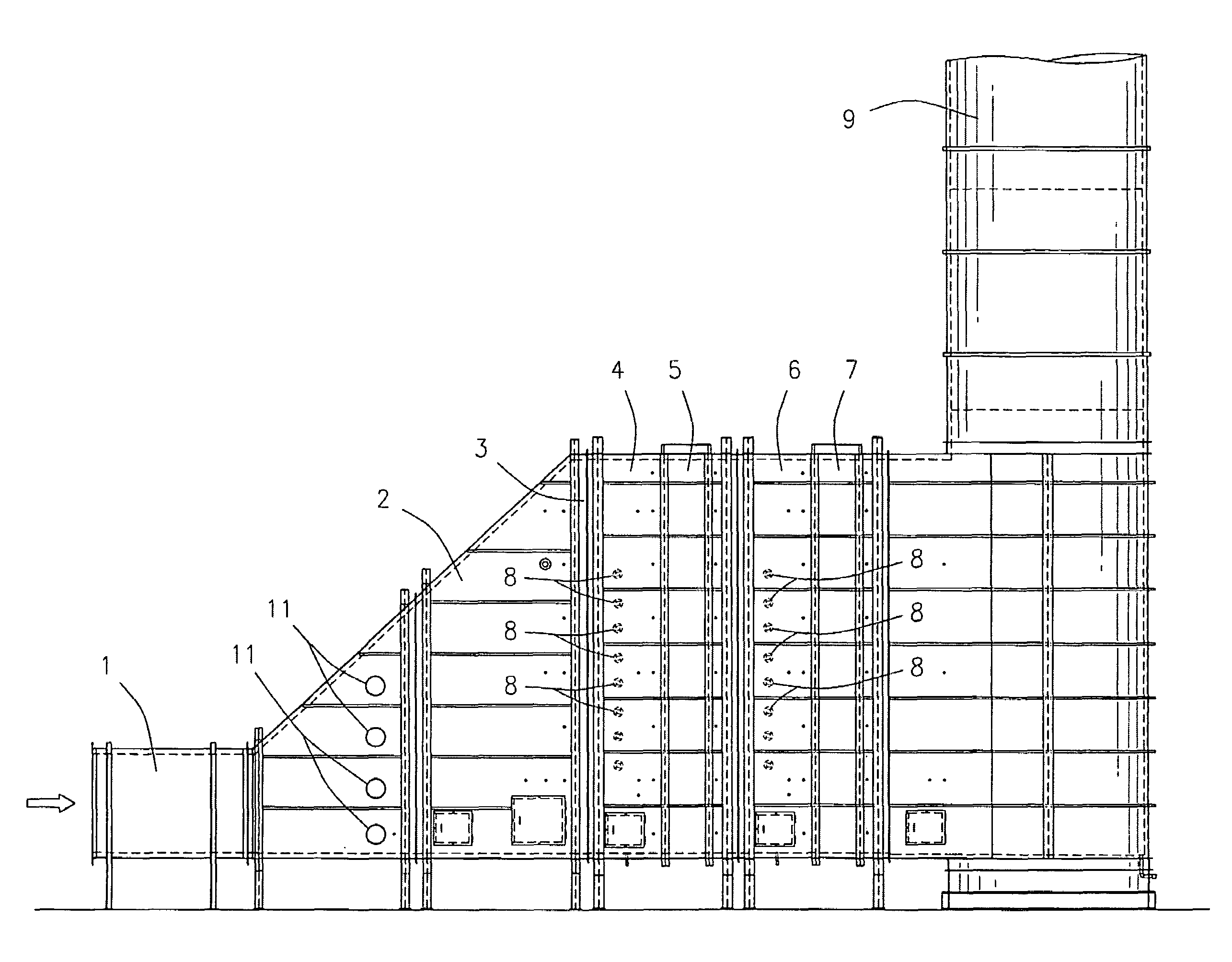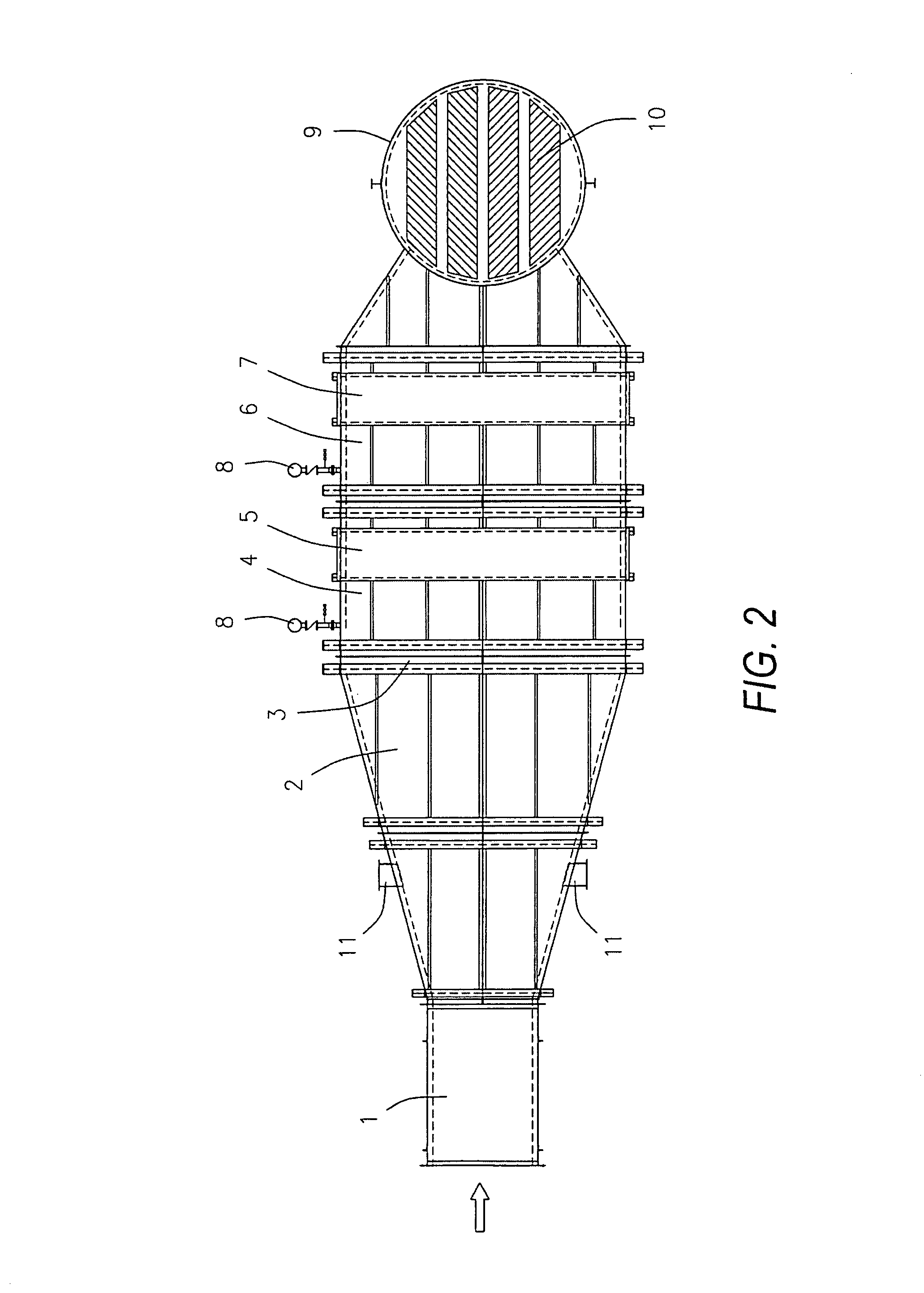Multi-bed selective catalytic reduction system
a selective catalytic and catalytic technology, applied in the direction of combustible gas purification/modification, separation processes, lighting and heating apparatus, etc., can solve the problems of toxic elements, bad for the environment, and releasing such combustion waste streams without removing these toxic elements, etc., to achieve the effect of reducing the amount of ammonia used
- Summary
- Abstract
- Description
- Claims
- Application Information
AI Technical Summary
Benefits of technology
Problems solved by technology
Method used
Image
Examples
Embodiment Construction
[0017]The devices and methods discussed herein are merely illustrative of specific manners in which to make and use this invention and are not to be interpreted as limiting in scope.
[0018]While the devices and methods have been described with a certain degree of particularity, it is to be noted that many modifications may be made in the details of the construction and the arrangement of the devices and components without departing from the spirit and scope of this disclosure. It is understood that the devices and methods are not limited to the embodiments set forth herein for purposes of exemplification.
[0019]The multi-bed selective catalytic reduction system provides a much-improved method for nitrogen oxide (NOx) reduction from a combustion waste stream. This method utilizes a carbon monoxide (CO) catalyst and multiple ammonia injection grids (AIGs) and selective catalytic reduction (SCR) catalysts in a two-stage system for the reduction of toxic elements present in combustion was...
PUM
| Property | Measurement | Unit |
|---|---|---|
| pressure drop | aaaaa | aaaaa |
| temperature | aaaaa | aaaaa |
Abstract
Description
Claims
Application Information
 Login to View More
Login to View More - Generate Ideas
- Intellectual Property
- Life Sciences
- Materials
- Tech Scout
- Unparalleled Data Quality
- Higher Quality Content
- 60% Fewer Hallucinations
Browse by: Latest US Patents, China's latest patents, Technical Efficacy Thesaurus, Application Domain, Technology Topic, Popular Technical Reports.
© 2025 PatSnap. All rights reserved.Legal|Privacy policy|Modern Slavery Act Transparency Statement|Sitemap|About US| Contact US: help@patsnap.com



